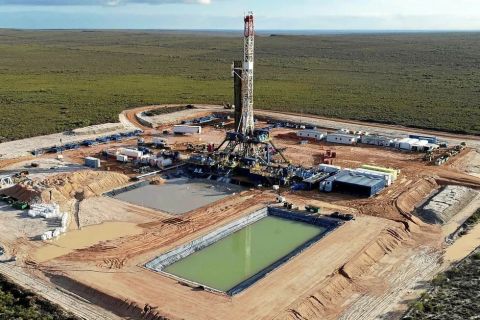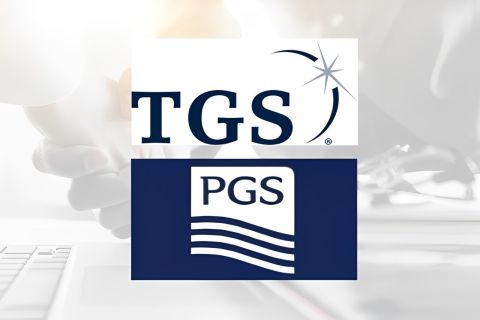?After decades of lobbying the SEC to revise its antiquated reserves-reporting structure, the oil and gas industry was finally granted the floor to voice its recommendations late last year when the SEC issued its long-awaited “concept release” of proposed changes.
?During the two-month public commenting period, the SEC received approximately 80 letters from industry participants including E&P companies, accounting and law firms, financial institutions and government energy committees about the proposed measures, which are designed to upgrade the existing reporting system.
This dialogue is finally bearing fruit. In late June, the SEC’s division of corporate finance and the office of the chief accountant announced its proposed revisions to the reporting structure, for the full SEC to review, based on the public’s recommendations.
Final versions of the oil and gas reserves-reporting requirements will be announced in early fall after a second round of comments, which is not expected to generate much in the way of objections to the proposed rules. The SEC proposes compliance with the new disclosure requirements, if adopted, for registration statements filed on or after January 1, 2010, and for annual reports for fiscal years ending on and after December 31, 2009, with no option to adopt earlier.
The proposed revisions show a willingness to do more than just tweak oil and gas reserve-reporting requirements.
A shared belief voiced in the majority of the responses to the concept release—and implicit in the proposed rule changes—is that reforming the current regulations will better reflect advances in the energy industry, and investors will be provided with a more informed, complete and reliable snapshot of a company’s oil and gas reserves.
The SEC proposes allowing companies to disclose more about their unconventional resources, and their probable and possible reserves, not just proved reserves.
Many respondents championed core reforms to the existing regulatory framework: permission to include unconventional resources as proven reserves in filings; recognition of new technologies, such as seismic imaging and horizontal drilling, to quantify reserves; a shift from using a fiscal-year-end price schedule to using an average annual price standard to reduce volatility; and adopting the definitions framework of the Society of Petroleum Engineers’ Petroleum Resources Management System (PRMS).
On the flip side, respondents were divided over the SEC’s proposal to allow E&P companies to disclose reserves other than proved reserves. Many companies report their reserves potential in investor communications in multiple ways: using approved SEC standards for proved reserves only; SPE definitions for proved, probable and possible reserves; and/or larger but less definitive numbers for the company’s estimated undeveloped resource base.
The majority of industry respondents also overwhelmingly rejected the SEC’s proposal to require a third party to evaluate disclosed oil and gas reserves.
Unconventional reserves
Across the commenting period, the SEC’s proposal to permit previously excluded nontraditional sources of oil and gas in reserve reporting was positively received.
As pressure has been applied by policymakers to discover alternative sources of energy, the energy industry has responded by seeking valuable hydrocarbons in unconventional prospects such as ultra- deepwater production, extra-heavy oils, gas-to-liquids (GTL), coal-to-liquids (CTL) and biofuels.
The U.S. Energy Information Administration (EIA) estimates that the supply from unconventional gas formations (tight gas, coalbeds and gas shales) now represents 45% of U.S. gas production, which clearly explains the industry’s strong desire to include these resources.
Oil and gas companies have been locating nontraditional resources through innovative technological advances, such as horizontal drilling, advanced formation-fracturing techniques, seismic imaging and reservoir-simulation models. All of these have transformed the industry into a diverse technological powerhouse. U.S. gas production has been rising, especially thanks to the many shale-gas plays now being aggressively developed.
Currently, SEC disclosure requirements dictate a conclusive actual product or flow test of a well, except in the Gulf of Mexico, to measure reserves. Clearly, this limited scope of testing for reserve quantities does not even begin to scratch the surface of the contemporary techniques being used by the industry. The proposed rules move this issue forward significantly.
Horse whispering
In an era in which the only thing that can be accurately predicted is extreme volatility in oil and gas prices, it seems logical that the industry would unanimously wish to overhaul the requirement to report based only upon a year-end oil and gas price in determining proved reserve quantities.
When the SEC reporting system was introduced in the 1980s, U.S. oil and gas prices were controlled and present-day conflicting global energy markets were not yet developed. Industry insiders point out that, even in relatively stable periods, it is rare for year-end commodity prices to even compare with the annual average price for oil and gas, given the erratic daily fluctuations that are part and parcel of the energy industry today.
Using some period of average prices in benchmarking reserves quantities would not only be a much more accurate portrayal for investors, it would help eliminate price volatility in general.
Many industry insiders agree that incorporating the newly revised PRMS within the SEC’s own guidelines would provide an indispensable blueprint for navigating through the unique challenges and changes facing the industry today. The PRMS is designed to reflect newer techniques and energy-company practices, and is used by E&P companies to prepare reserves estimates for many purposes other than SEC filings.
In its comments to the SEC, the American Petroleum Institute (API) notes that the SEC “should adopt the (Society of Petroleum Engineers’) PRMS as the sole technical framework, which registrants should follow in analyzing and categorizing their oil and gas reserves.”
Snuffing out risk
In keeping with the quest for investor transparency, many energy insiders have strongly opposed the SEC’s proposal to allow E&P companies to disclose reserves other than proved reserves in filings. Although the current guidelines require that reserves must be proved—according to the SEC’s slightly murky concept of “reasonable certainty”—industry insiders have become highly familiar with this concept when classifying and disclosing proved reserves. They indicated in their responses that only minor adjustments need to be made to this concept.
By requiring companies to disclose reserves other than proved reserves, responders argue that the concept of “reasonable certainty” would undoubtedly be dismantled.
The API cautions in its comments, that “we believe that investors…would not be well served by the mandated inclusion of probable reserves…below the proved threshold, due to the increased uncertainty of resources in these categories….”
In the wake of reserve-reporting scandals in recent years, the SEC proposes the concept of mandatory engagement of an independent third party to evaluate reserves disclosed in filings. It said that E&P companies must recognize that identifying the scope of the third party’s role, identifying proper qualifications and professional standards, and enforcing such standards might require relying on a professional organization outside the SEC’s control.
As can be expected, the oil industry presented a united defensive front against this notion. The API forcefully argued that in-house technical staffs were the most efficient and knowledgeable purveyors of a company’s reserves data, and that contracting an independent third party in a deadline situation would not ultimately result in the most accurate reserve reporting. The SEC has agreed.
The SEC has shown that it is well aware of technology shifts and changing project profiles in the E&P business. Given the pervasive topic of global warming in any energy discussion, there is no doubt that new technologies will emerge and evolve to meet the world’s vast energy demands. This, of course, will undoubtedly require more finely tuning the reserve-reporting framework in the years to come. But for now, the industry has spoken and the SEC has tuned in.
David P. Elder is a partner in the Houston office of law firm Akin Gump Strauss Hauer & Feld LLP. Michael G. Long is chief financial officer of Sanchez Oil & Gas Corp. in Houston.
Recommended Reading
Brett: Oil M&A Outlook is Strong, Even With Bifurcation in Valuations
2024-04-18 - Valuations across major basins are experiencing a very divergent bifurcation as value rushes back toward high-quality undeveloped properties.
Marketed: BKV Chelsea 214 Well Package in Marcellus Shale
2024-04-18 - BKV Chelsea has retained EnergyNet for the sale of a 214 non-operated well package in Bradford, Lycoming, Sullivan, Susquehanna, Tioga and Wyoming counties, Pennsylvania.
Triangle Energy, JV Set to Drill in North Perth Basin
2024-04-18 - The Booth-1 prospect is planned to be the first well in the joint venture’s —Triangle Energy, Strike Energy and New Zealand Oil and Gas — upcoming drilling campaign.
PGS, TGS Merger Clears Norwegian Authorities, UK Still Reviewing
2024-04-17 - Energy data companies PGS and TGS said their merger has received approval by Norwegian authorities and remains under review by the U.K. Competition Market Authority.
Energy Systems Group, PacificWest Solutions to Merge
2024-04-17 - Energy Systems Group and PacificWest Solutions are expanding their infrastructure and energy services offerings with the merger of the two companies.




